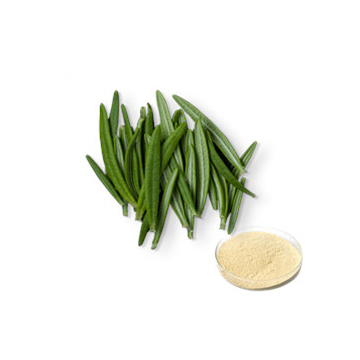

The extract is from rosemary (Rosmarinus officinalis Linn.), a common household plant that has grown in the Alps since the Middle Ages, and is now found throughout the world. According to folklore, rosemary takes its name from the Virgin Mary, who draped her cloak on a rosemary bush, and then placed a white flower on top of the cloak. The flower turned blue overnight, and the plant became known as the “Rose of Mary.”
Rosemary has been used for thousands of years as a savory spice, food preservative, in cosmetics and hair products, and as an herbal medicine for a variety of health disorders. Until now however, the exact chemical pathways involved in its beneficial effects have remained unknown.
There are hundreds of research papers and studies on the extensive antioxidant capabilities of rosemary. Before retiring from the U.S. Department of Agriculture, botanist Dr. James Duke established the landmark Phytochemical Database that lists all the known chemical compounds in more than 1,000 edible plants, including the most common herbs and spices. According to Duke, rosemary contains more than two dozen antioxidants, and it is the only compound in his database (CRC Handbook of Biologically Active Phytochemicals, 1992) to have immune regulating, anti-inflammatory, and antioxidant activities.
Although rosemary extract has been used commercially as an antimicrobial food preservative for years, now we know for certain that it also has a lot to offer as a nutritional supplement, especially in the prevention of some types of cancer, allergies, and the progression of Alzheimer’s disease.
Rosemary extract has a lot going for it and you can find it as an essential oil, an oil, a liquid extract, and a powdered extract. Rosemary extract is supposed to offer toning, astringency, increased blood circulation, as well as anti-oxidant, anti-inflammatory, analgesic, and anti-microbial features. It inhibits oxidative cell damage, and it can be added to our products to increase the shelf life. Finally, there is some suggestion rosemary extract might be anti-aging by offering a decrease in the appearance of fine lines and wrinkles.
There are six main components of rosemary oil that offer the awesome qualities we'll soon want in every product! They are carnosic acid, carnosol, ursolic acid, rosmarinic acid, rosmaridiphenol, rosmanol. Rosemary also contains chlorogenic acid, caffeic acid, and tannins.
1.Used as spice in seasonings, meats, baked foods.
2.Used as antioxidant and antiseptic used in lipids, dairy foods, oily foods, confections, baked foods, protect from deterioration and fading.
3.Used in water-soluble foods, beverage, drinks, aquatic products for antioxidant, antibacterial and antiseptic.
4.Widely used in cosmetics,possess astringency, tighten skin, help maintain elasticity and luster of skin.
5.Used in medication & health care, ease the nerve, calm the emotions, relieve stomach symptoms, such as greasiness, vomiting, flatulence, stomachache, relieve rheumatism and alleviate the pain, regulate catamenia. adjust blood pressure.
There are several Similar Products available. Here are a few of the most common types:
Angelica sinensis Extract :This product regulate female hormones,treatment of most menstrual and menopausal problem,and in pregnancy and delievery,cure injuries from falls,etc
Valerian Extract: This product helps you to relax and to sleep deeply and restfully,relief from anxiety and stress,also found to be useful for cramping,dysmenorrhea,ect .